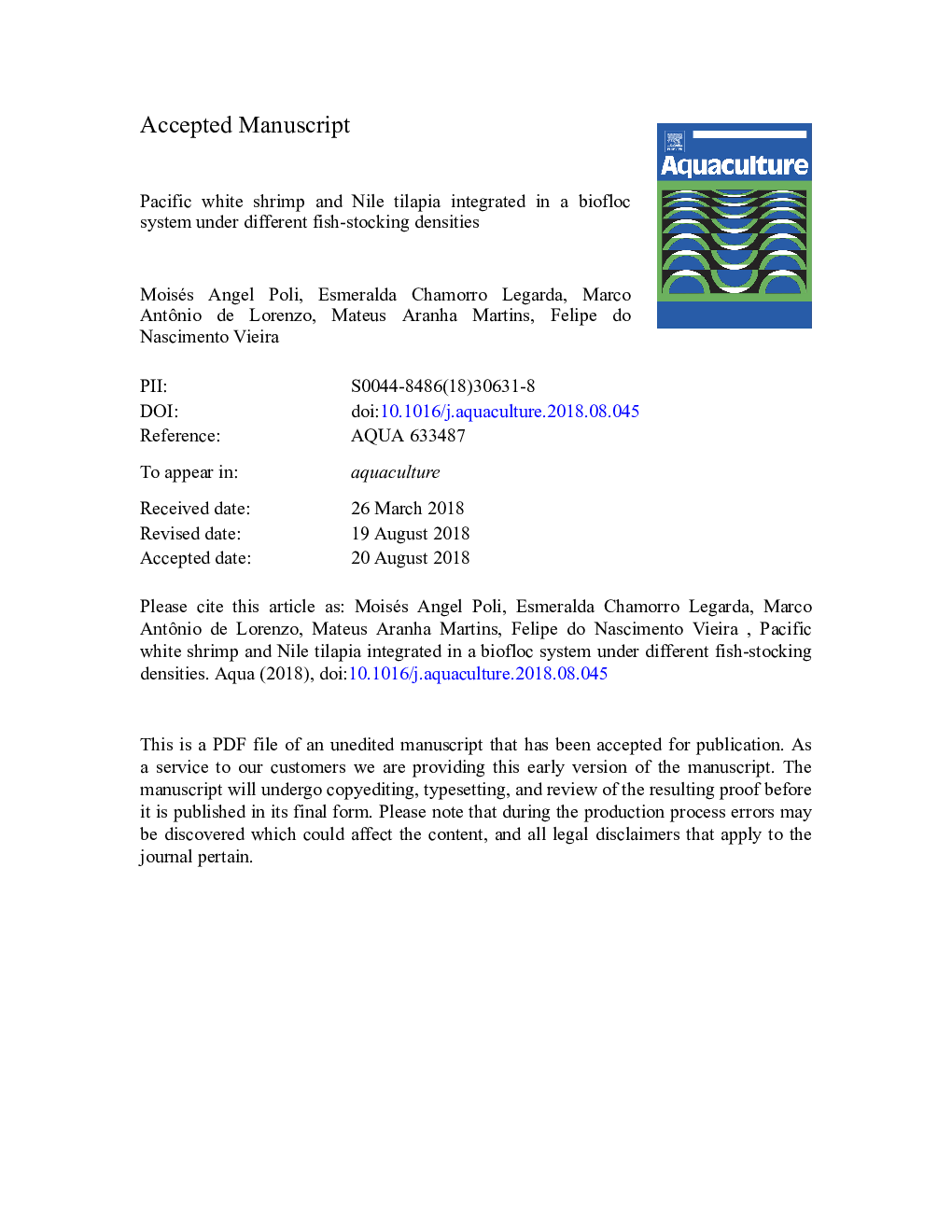| Article ID | Journal | Published Year | Pages | File Type |
|---|---|---|---|---|
| 8950024 | Aquaculture | 2019 | 25 Pages |
Abstract
This study aimed to evaluate the effect of different stocking densities of Nile tilapia, Oreochromis niloticus, integrated with Pacific white shrimp, Litopenaeus vannamei, reared in a biofloc system for 57â¯days. The performance of both species and the ecological efficiency of the system were evaluated. Four levels of tilapia stocking density were evaluated: 0, 8, 16 and 24 fish per tank (90â¯L useful volume). The initial weight was 4.8â¯Â±â¯0.1â¯g and 9.6â¯Â±â¯0.1â¯g for shrimp and fish, respectively. The shrimp were fed according to the feed table, and the fish were fed with 1% of fish biomass, stimulating the tilapia to seek food in the biofloc. Results show no difference between average shrimp weight (14.9â¯Â±â¯0.6â¯g) and survival (93.0%â¯Â±â¯1.0%). Similarly, fish obtained a final mean weight of 61.9â¯Â±â¯3.8â¯g and survival of 91.1â¯Â±â¯7.9%. Total yield was higher based on the increase in fish density. The sludge produced per animal biomass (sludge:biomass ratio) decreased as fish density increased (yâ¯=â¯â 0.0083xxâ¯+â¯0.5995 r2â¯=â¯0.87). Nitrogen recovery rose linearly with the increase in fish density (yâ¯=â¯0.036xxâ¯+â¯0.2725, r2â¯=â¯0.84), as did phosphorus recovery (yâ¯=â¯0.00711xxâ¯+â¯0.1395, r2â¯=â¯0.91). These results demonstrate the feasibility of increasing yield up to 31.2% by integrating L. vannamei and O. niloticus in a biofloc system. Also, the decrease in sludge:biomass ratio and the higher nitrogen and phosphorus recovery increased the sustainability of L. vannamei rearing in a biofloc system.
Related Topics
Life Sciences
Agricultural and Biological Sciences
Aquatic Science
Authors
Moisés Angel Poli, Esmeralda Chamorro Legarda, Marco Antônio de Lorenzo, Mateus Aranha Martins, Felipe do Nascimento Vieira,
